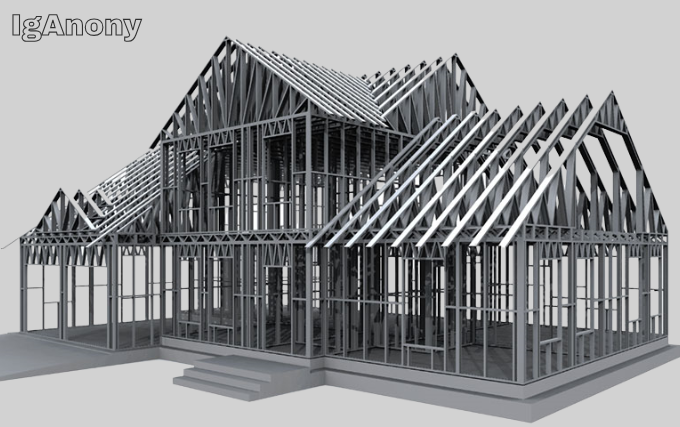The construction industry has witnessed a remarkable transformation over the past few decades, with a significant shift towards sustainability, efficiency, and durability in building design and implementation. Amidst this evolution, steel frame solutions have emerged as a cornerstone of modern construction practices, setting new standards for architects, engineers, and contractors globally.
Building on a Strong Foundation
At the heart of this revolutionary construction methodology is the unparalleled strength-to-weight ratio of steel frames, ensuring the durability and longevity of structures. The steel frame provides a robust skeleton to buildings of various scales, from single-storey dwellings to towering skyscrapers. This resilience is especially crucial in geographies prone to environmental challenges, such as earthquakes and storms, where the integrity of the frame can make the difference between safety and disaster.
Efficiency in Construction
One of the key advantages of steel frame construction is the efficiency it brings to the building process. Steel components are often fabricated off-site to precise measurements, reducing waste and minimising the risk of human error. This precision significantly cuts down on-site construction time, translating into direct economic savings and allowing quicker occupancy, which is particularly beneficial for commercial projects with tight deadlines.
Versatility in Design
Steel’s versatility is another factor contributing to its popularity in construction innovation. The adaptability of steel frame solutions accommodates a wide array of architectural designs, from the conventional to the avant-garde. Architects appreciate the freedom steel frames provide, enabling them to push the boundaries of their creative vision without compromising structural integrity.
Eco-Friendly and Sustainable
In the wake of increasing environmental awareness, sustainability has become a priority in construction. Steel frames are inherently eco-friendly; they are typically comprised of a significant percentage of recycled material and are fully recyclable at the end of their lifespan. Consequently, steel framing contributes to the circular economy, reducing the environmental footprint of new constructions and aligning with global green initiatives.
Cost-Effective Over Time
Considering the long-term cost implications, steel frame solutions are extraordinarily cost-effective. Though the initial investment might be higher compared to traditional building materials, the longevity and minimal maintenance of steel frames result in substantial savings over the building’s life cycle. Furthermore, the energy efficiency that can be achieved through well-designed steel structures positively impacts operational costs for heating, cooling, and lighting.
Resilience Against the Elements
Steel’s resistance to pests and decay sets it apart from wood and other traditional materials that are susceptible to termites, mould, and rot. These factors not only undermine structural stability but can also lead to costly repairs and maintenance. By employing steel frames, one can virtually eliminate these risks, preserving the structural integrity and aesthetic appeal of the building.
Modularity and Adaptability
The modular nature of steel framing lends itself to future adaptations and expansions with minimal disruption. Flexibility for change is especially important in commercial or industrial spaces that might need to repurpose or extend their facilities to accommodate growth or change in use.
Enhanced Safety Features
Safety concerns take precedence in modern construction, and steel frames inherently boast fire-resistant qualities which are critical in protecting life and property. The rigidity of steel also means less sway and movement in high-rise buildings, contributing to the comfort and well-being of occupants.
Elevation of Acoustic Performance
The acoustics of a building can significantly affect its functionality and the comfort of its users. Steel frame solutions can be integrated with sound-dampening materials to improve acoustic performance, which is particularly valuable in residential, commercial, and educational environments.
Implementation Across Various Sectors
Steel frame construction is not limited to a single sector; it is as suitable for residential projects as it is for commercial, industrial, and public infrastructure developments. The proliferation of steel frame applications speaks volumes about its versatility and effectiveness, confirming its role as a truly universal building solution.
Redefining the Skylines
In the context of urban development, steel frames have been instrumental in redefining city skylines. The material’s capability to support slender, taller structures without compromising on floor space has revolutionised the aesthetic and practical aspects of urban architecture.
Incorporating Modern Technologies
Modern construction heavily relies on the integration of technology, and steel frames fit seamlessly into this landscape. From computer-aided design (CAD) to building information modelling (BIM) techniques, steel lends itself to precision and collaboration between various professionals involved in the construction process, enhancing the overall quality of the final product.
Driving Industry Innovations
As a catalyst for further innovations in construction, steel frames compel the industry to develop new materials and methods that complement its properties. This includes advanced insulation materials for energy efficiency, innovative cladding systems for aesthetics, and smart technology integration for building management.
Conclusion
It is unequivocal that steel frame solutions have become an indispensable component of modern construction. They continue to influence innovation across the sector, offering benefits that extend well beyond the basic framework of any given structure. Through its strength, flexibility, sustainability, and cost-efficiency, steel framing stands as a testimony to the evolution of building practices. As the industry marches towards a future of ever-increasing demands, steel frames will undoubtedly play a pivotal role in meeting those challenges, forging stronger, smarter, and more sustainable spaces for all.
For firms looking to integrate these advancements into their projects, adopting steel frame solutions is the first step towards embracing the future of construction.







